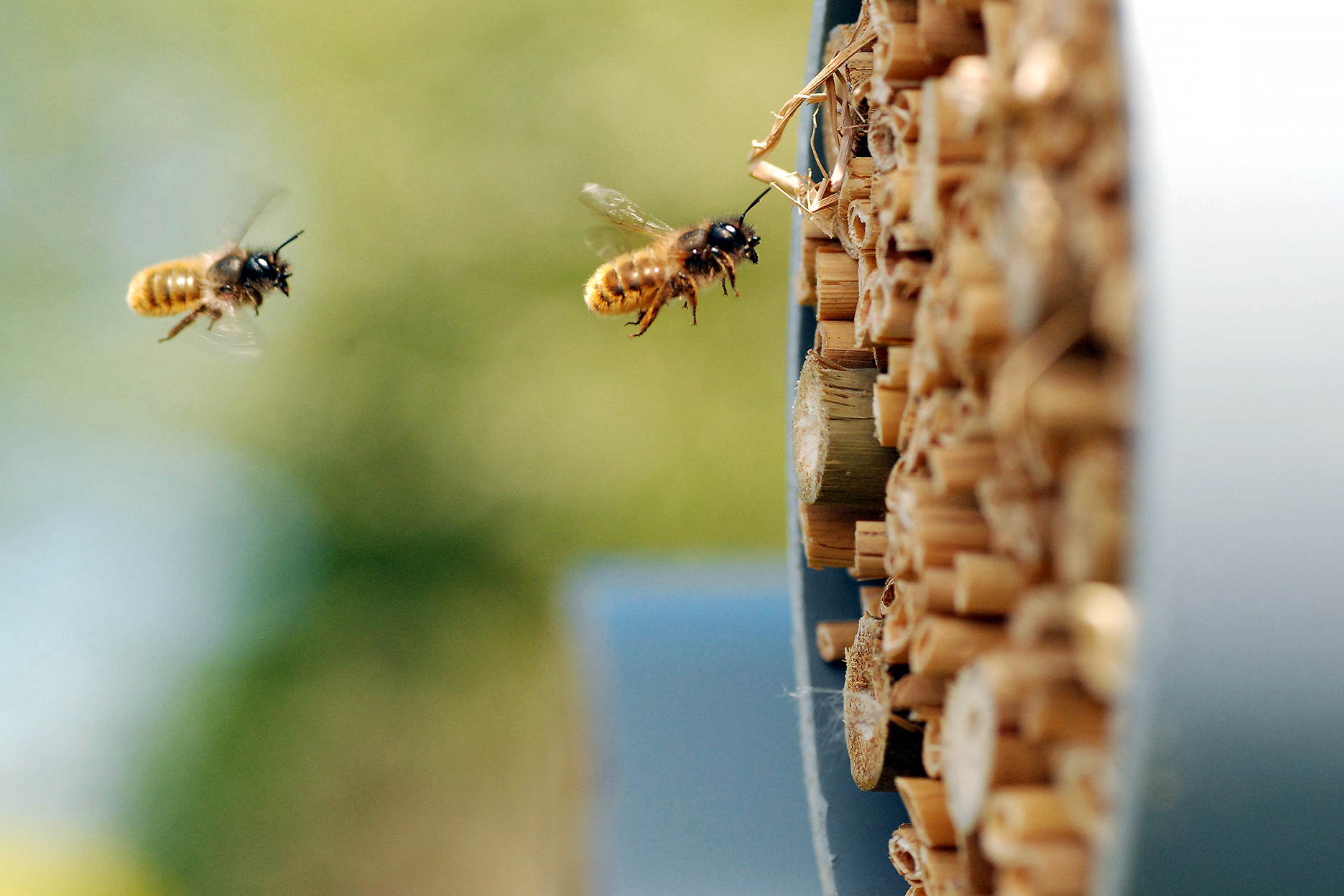
After an early October freeze, the flowers and plants that bees have relied on all summer for food are dead or dying and now the bees are on a "feeding frenzy."
Pinky Reinsch wondered why there seemed to be so many more bees and wasps flying around last weekend. Turns out, several of us in the Colorado Public Radio newsroom also experienced increased wasp activity as well.

Reinsch was at the Illegal Pete's on Colfax watching the Broncos game when she noticed the bartenders catching bees and releasing them outside.
"I was very grateful that the employees at Illegal Pete's were releasing them outside," she said. "I feel like there are just more bees this year for some reason."
Gregg McMahan, the "bee guru" who owns Rocky Mountain Bee, a removal and education company, said the stinging insects are out foraging for food and preparing for winter.
"It's a tough time of the year because all the flowers have basically died for the year, or they're about to die and so there's very little nectar for honeybees around right now," he said. "What that means is we have honeybees everywhere searching for food."
There aren't any more bees this time of year than there were over the summer, but the feeding frenzy means their foraging is more noticeable.
"Just like bears or any other animal this time of year, they are panicking to get more food in the hive before winter," he said.
Yellowjackets and hornets, which are among the more than 950 bee species in Colorado, are also out looking for food. These species are carnivores and they feed on other insects.
The most recent freeze probably didn't affect their nests, McMahan said, but they are looking for as much food as possible so that they can produce queens, which are the only members of the colony that hibernate. The male wasps die off and the new queens start their own nests next season.
Foraging bees are not aggressive but that people often mistake Western yellowjackets for honeybees. A sting from a bee is painful, but a yellowjacket wasp can sting multiple times — making the mistake of crossing paths with one an especially regrettable one.









